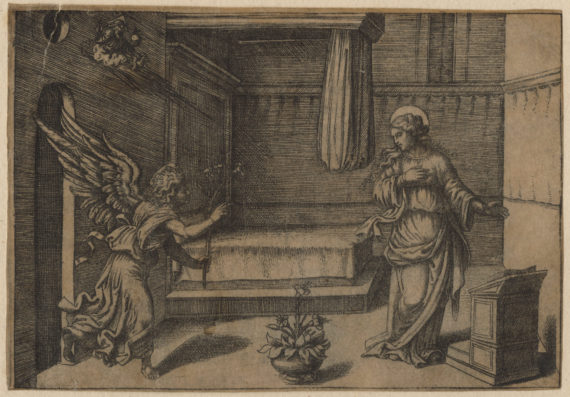The Annunciation is the Biblical moment, frequently depicted in the visual arts, when the angel Gabriel announces the news of the virginal conception to Mary. These images of the Annunciation present a contrast between intimate knowledge and bookish knowledge, at the threshold between the enclosed bedroom and the outer space from which the angel steps in. Yet, while celebrating the magnitude of the moment, they also suggest a delicate irony: it is the news of bodily conception that seems to make a forceful, masculine entry into a moment of meditative reading, presumably of the Bible, that seems intimate and feminine.
What is the relation between the book, the pillow and the divine message? What is the status of each of these participants of the scene as knowing objects? The light of God and the Dove’s piercing rays in the Flemish work (left) are invaders into a quiet, gendered space, distracting Mary from her reading of her book, presumably the Bible. Gabriel’s finger points to the dove of God which is penetrating Mary’s womb at the very moment she hears the angelic news. In Raimondi’s sparser canvas (right), the presence of the bed evokes serenity, which is disrupted by the angel Gabriel’s outstretched, pointed finger and sturdy wing, as Mary turns aside from her book, hand on chest, poised between startlement and acceptance.
The bedroom setting is used repeatedly by artists to convey the eruption of mighty divine knowledge – which is also an agent of impregnation – into shady afternoon scenes of knitting and reading, which are associated with gentle, female and domestic activities. It is also, curiously, a scene of unknowing. How is a mortal woman to make sense of the news that coincides with conception in the divine drama of knowledge? The bedroom becomes the site where knowledge and incomprehension meet.












